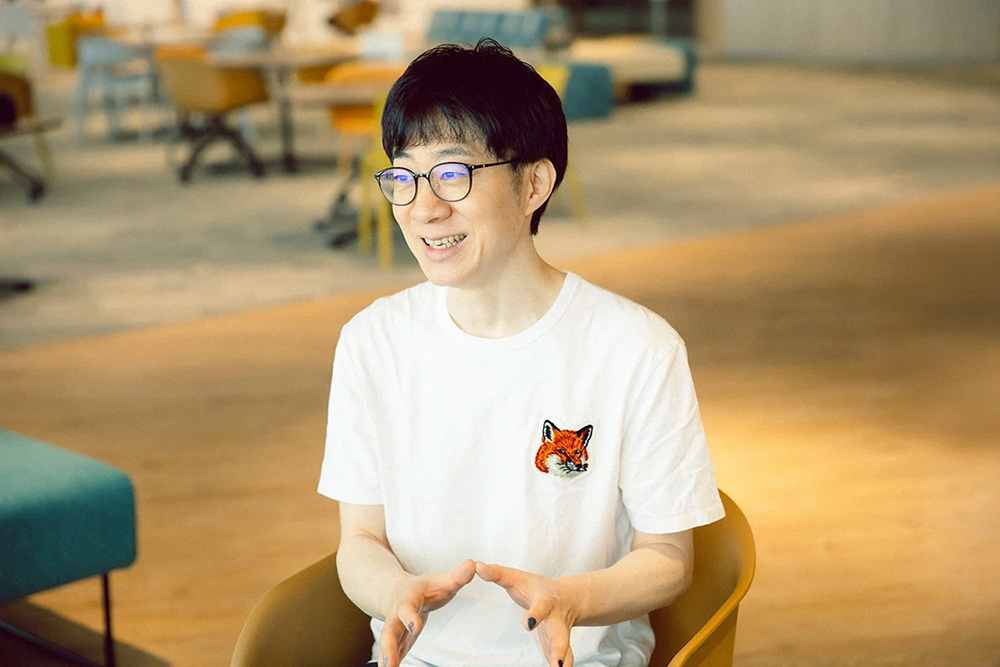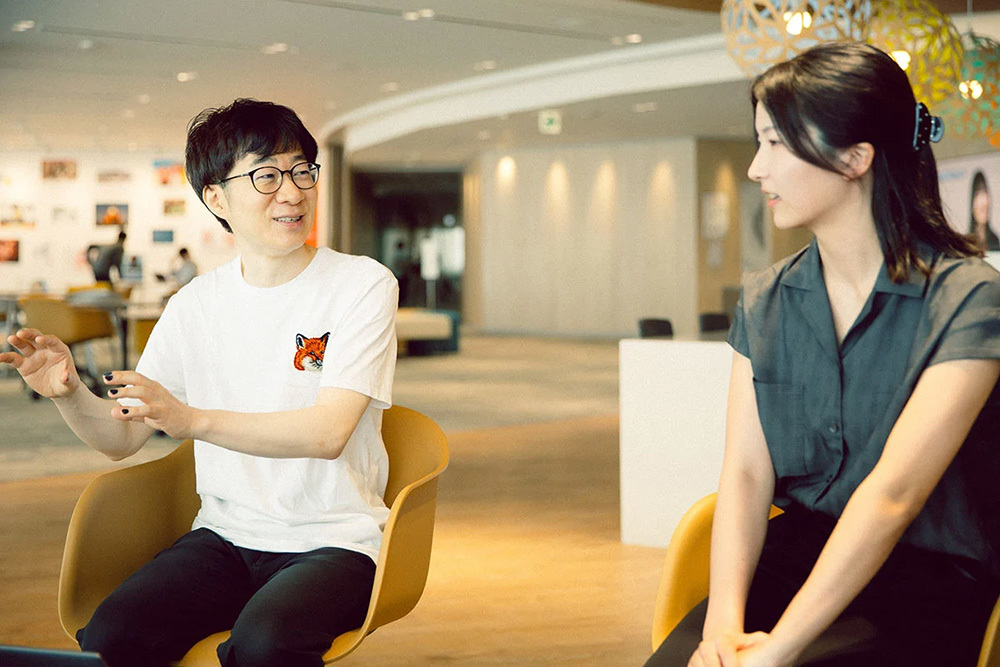Note: This website was automatically translated, so some terms or nuances may not be completely accurate.
Could "deep reading of hit works" unlock breakthroughs in business!?

Have you ever deeply considered why certain anime films achieve record-breaking box office success or why popular dramas trend on social media every time they air? FUKAYOMI is Dentsu Inc.'s proprietary method for analyzing hit films, dramas, and anime to predict shifts in our values and future desires. Its sharp insights, going beyond mere work critiques, may offer significant hints for opening new business avenues.
※This article is an edited reprint of content originally published in Do! Solutions.
<Table of Contents>
▼Uncovering Value Shifts and Future Desires Through Hit Works
▼The Desire for Multilayered Perspectives Seen in the International Hit Film "Monster"
▼Transforming Insights from Works into Business Hints
▼"FUKAYOMI" Expands Vision Formulation and Content Creation Horizons
▼Using FUKAYOMI as an Entry Point Lowers the Barrier to Predicting the Future
▼FUKAYOMI's Method and Results in One Volume! 'What Will Future Consumers Desire? - Six Value Shifts Revealed by Analyzing Hit Works' Now Available
Uncovering Value Shifts and Future Desires Through Hit Works
──First, tell us about FUKAYOMI. You two are members of Dentsu Inc. DESIRE DESIGN (hereafter "DDD"), which has been featured several times in Denpoh. Is FUKAYOMI like a subcommittee of DDD?
Sato: That's correct. DDD is a Dentsu Inc. project conducting consumer research and marketing support centered on "desire," with several subcommittees. One of these is the FUKAYOMI team, which tackles predicting future desires. Since "future desires" are still unseen and latent, predicting them requires digging very deep for insights. When considering what methodology might work, focusing on "video content" was the beginning of FUKAYOMI.
──Why visual content?
Sato: Partly because I loved film, having made independent movies in university. But actually, attending a screenwriting school as a hobby after joining the workforce had a major influence. Film and drama scripts are crafted very strategically. Within a fixed timeframe, the creator's ideas and the emotional movements of the audience are meticulously calculated and woven in. While studying screenwriting, I intuitively felt that by dissecting hit works, we could extract the desires and values that resonate with contemporary society. So, I analyzed several works and spent half a year systematizing the FUKAYOMI method.

──Could you explain the FUKAYOMI Method in more detail?
Sato: We use a unique framework to decipher the "flow of changing values." We extract and analyze how "desire generation," "desire resolution," and "value renewal" occur within hit works, and what "new desires" might emerge from them. The key point is that, beyond individual planner perspectives, we incorporate analysis like social listening and hold repeated team discussions to derive highly resonant results.
Desire for Multilayered Perspectives: Insights from the International Hit Film "The Host"
──Could you share one specific analysis example?
Ishikawa: For instance, the hit film "Monster," which won the Best Screenplay Award and the Queer Palm at the 76th Cannes Film Festival—we analyzed this in the book as well. The story begins when a single mother notices changes in her son and suspects corporal punishment by his homeroom teacher. Midway, the perspective shifts to the teacher, then to the son and his friends, revealing multi-layered truths about the same events.
──The film never definitively answers "What is the monster?" sparking diverse interpretations both domestically and internationally, right?
Ishikawa: Yes. I believe this film was a symbolic work that stirred our desire to "approach the truth" in today's information-saturated society, while also revealing a shift in values: "How much of what I see is actually true?" and "If viewed from a different perspective, might it hold a completely different meaning?" Building on that, we can predict that in the future, the desire for multiple sources—the desire to hold multiple perspectives in a bird's-eye view—will grow stronger than the pursuit of a single truth. This desire isn't limited to "monsters"; the plot twist where perspectives reverse midway can be seen in many recent hit works.

──Indeed, we've seen a rise in works that depict truth three-dimensionally from multiple viewpoints. This new desire for "multiple sources" feels very plausible. By the way, how many works has FUKAYOMI analyzed so far?
S ato: About 150 works. We're taking various approaches, such as tracking how desires change by decade and classifying trends discernible across multiple works. Furthermore, we cross-reference this with quantitative analysis from DDD's biannual "Heart-Moving Consumption Survey," ensuring our findings aren't based solely on subjective opinions. This provides solid backing for our analysis, resulting in highly convincing outcomes.
Transforming diverse discoveries from works into business insights
──Now that we understand FUKAYOMI's approach to interpretation, the question arises: "How can this be applied to business?"
Sato: There are many ways to utilize the analysis results. For example, focusing on "value shifts," you can think, "If such value changes exist, our technology could be applied here," and use it for new product or service development. You can also refresh the appeal methods for existing products to align with changing values. As mentioned earlier, we've analyzed over 150 hit works, so we can provide information on suitable values and desires tailored to the client's target audience and challenges.
──I see. That sounds like it could provide direct hints for those seeking new marketing angles.
Ishikawa: Speaking of that, analyzing the Detective Conan movie series provided many insights for marketing applications. Despite being an ultra-long-running series since the 90s, the Detective Conan movies are astonishingly successful, expanding their box office revenue every year. We analyzed the entire series comprehensively, starting from the very first film.
Without going into too much detail, we discovered that a major factor in its recent success lies in effectively capturing the "fan-favorite character" context. Each film features a different main character, depicting the relationships centered around that person. It creates the feeling that the franchise itself is engaging in fan-made content. Consequently, every April when the new film releases, it becomes a festival-like atmosphere, much like the excitement around Comiket.
Sato: So, using these featured characters as entry points, new fans join every year. This clever strategy has made it a hugely successful franchise, consistently exceeding ¥10 billion in box office revenue for several years now. The key point is shining a light on supporting characters who were previously considered unlikely to become the focus of fandom activities for the majority. Rather than looking at the product as a whole, focusing on each individual element reveals that there are always people who are deeply devoted to it. This approach of expanding the fanbase by tapping into that "obsession" or "favorite" as a breakthrough point can be directly applied to other marketing strategies, right?
Interestingly, the long-selling snack "Tabe-ko Doubutsu" (Animal Crackers) employs a similar approach. It gained traction by releasing capsule toys featuring the animals depicted on its packaging. This led to expansions like experiential events, apparel, games, and even a movie adaptation, driving double-digit annual sales growth for the product itself. It's now a major hit. Who would have thought biscuits for learning English could become a fandom object?
──Connecting FUKAYOMI to marketing provides a fresh perspective—that's fascinating!
Sato: All of us at FUKAYOMI, myself included, are strategic planners. We constantly think about how to apply insights gained from works to business. DDD has extensive experience in marketing support, so FUKAYOMI's activities are significantly different from mere work criticism. What's unique and a strength is that they provide effective " " hints for business.
Applying "FUKAYOMI" broadens the scope of vision formulation and content creation
──From the perspective of applying FUKAYOMI to business, are there other possibilities?
Sato: On a larger scale, I believe it can also aid in formulating vision and purpose. This is because when deciding what vision a company can offer consumers for the future, if you don't base it on "what future people will desire," it risks missing the mark.
Personally, I'd like to collaborate with media professionals and those involved in sales promotion planning. While tie-up campaigns leveraging the fame or popularity of content or talent have been the mainstream approach for sales promotion, I believe FUKAYOMI can help delve deeper into the viewer's values and desires. This could lead to more refined and optimized content matching and campaign planning.
──By meticulously capturing consumer insights, new relationships between companies, content, and customers might emerge.
Ishikawa: While various consumer survey data exist, most quantify explicit voices, making it difficult to uncover the deeper, often unrecognized aspects of consumers' minds. We hope FUKAYOMI will be used to capture these latent needs, serving as a catalyst to foster diverse businesses and relationships.
Using FUKAYOMI as a starting point can lower the barriers to what might seem like difficult future forecasting.
──Hearing all this, I feel that mastering the FUKAYOMI method itself, not just its analysis results, will become a major strength for business professionals.
Sato: Thank you. I also believe that's crucial. By watching many films and unraveling the underlying points of empathy or the factors that moved me, I gradually began to see human desires and emotions. This allows me to develop various ideas and perspectives within myself, enabling me to offer more opinions than before in various business situations. The FUKAYOMI method serves as an effective framework for this training. Ideally, we wouldn't just provide our deep insights to clients; we'd love for each individual to practice it themselves.
──For example, would it be possible to offer such training programs as a solution?
Sato: FUKAYOMI's services adopt a flexible approach tailored to individual client needs and challenges. For instance, understanding narrative structure and its impact on human psychology directly aids in writing proposals. It also enhances storytelling skills, making it possible to incorporate steps like examining value shifts and predicting future desires into projects, or to program it as a training menu.
Exploring human desires or predicting the future might sound complex, but FUKAYOMI's approach is surprisingly simple: predicting future desires by analyzing the trends in shifting consumer values. We encourage you to feel free to consult with us.
FUKAYOMI's Method and Track Record in One Volume! "What Will Future Consumers Desire? 6 Value Shifts Revealed by Analyzing Hit Products" Now Available
──The FUKAYOMI Method was published as a book on July 26, 2025, right?
Sato: Yes. As the culmination of five years of activity since its inception, this book compiles the "6 Value Shifts" derived from analyzing 30 representative hit works and the "3 Future Desires" predicted from them. I believe it offers valuable hints for those seeking to bring a fresh perspective to their business beyond its current trajectory, so I'd be delighted if many people read it. And for those wanting to learn more, I'd be happy to arrange an opportunity to discuss it directly.

──After reading this, you might never be able to watch content without thinking about it again.
Ishikawa: That's true. Since joining the FUKAYOMI team, even when watching movies privately, I find myself thinking, "How might this change the audience's values?" But thanks to that, I believe I've gained a long-term perspective that considers shifts in values and the era's context, even in work outside FUKAYOMI.
That said, this book offers content anyone who enjoys video content—not just business professionals—can appreciate. I really hope you'll pick it up with a lighthearted attitude.
■Book Introduction Page
■DENTSU DESIRE DESIGN: Marketing Support Services Centered on "Desire"
Downloadfree materialshere

Was this article helpful?
Newsletter registration is here
We select and publish important news every day
For inquiries about this article
Author

Naofumi Sato
Dentsu Inc.
Second Marketing Bureau
Planning Director
Armed with humanities knowledge from throughout history and across cultures, I operate as "The Director," whose domain encompasses "everything that improves society"—from business growth consulting and planning development to marketing strategy and workshops. Occasionally a screenwriter.

Yuri Ishikawa
Dentsu Inc.
First Integrated Solutions Bureau
Solution Planner
Engaged in a wide range of activities, from strategic planning and experience design for beverage manufacturers and cosmetics brands to supporting corporate marketing transformation. Hobbies include watching domestic and international films and dramas, as well as attending musicals. Joined the FUKAYOMI team last year.



